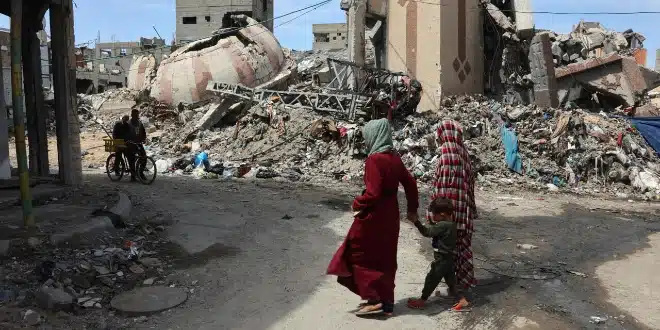Hamas has informed international mediators that it has accepted a new ceasefire proposal for Gaza, according to a source within the group who spoke to Al Jazeera on Monday. The announcement, reported by Reuters and the Times of Israel, signals a potential turning point in months of fraught negotiations aimed at halting the devastating conflict.
The proposal, submitted to Hamas on Sunday, includes terms for both a temporary truce and a phased release of hostages held in Gaza. While full details have not been made public, Palestinian sources suggest that this agreement could serve as a framework for a broader settlement if the initial terms are successfully implemented.
Details of the Proposed Truce
Reports from regional media outlets indicate that the offer presented to Hamas represents a compromise between a complete end to the war and a limited, time-bound pause in fighting.
- Al Arabi (Qatar): Described the agreement as a revised version of Hamas’s latest response, outlining a 60-day ceasefire framework.
- Al Arabiya (Saudi Arabia): Characterized the deal as a middle ground between a permanent ceasefire and a short-term truce, involving both hostage releases and a gradual withdrawal of Israeli Defense Forces (IDF) from parts of Gaza.
- Al-Hadath (Saudi Arabia): Citing a Palestinian source, reported that Hamas accepted the mediator’s proposal “without any comments,” suggesting a willingness to move forward without further amendments.
If implemented, the arrangement could mark the first sustained halt in hostilities since the war began nearly two years ago, although uncertainties remain about Israel’s official response and the durability of any temporary truce.
International Reactions and US Pressure
The reported breakthrough comes amid mounting international pressure for a ceasefire, as humanitarian conditions in Gaza continue to deteriorate. Aid agencies have repeatedly warned of famine, severe shortages of medical supplies, and widespread displacement among Gaza’s population of over two million.
In Washington, former US President Donald Trump weighed in on the situation through a statement on Truth Social. He dismissed the ceasefire framework as insufficient, insisting that Hamas must be completely dismantled before hostages can be safely returned.
“We will only see the return of the remaining hostages when Hamas is confronted and destroyed!!! The sooner this takes place, the better the chances of success will be,” Trump wrote.
Trump also highlighted his record in past negotiations and military actions, claiming credit for the release of “hundreds of hostages,” the ending of “six wars in six months,” and the destruction of “Iran’s nuclear facilities.” His comments underscored a harder-line stance that contrasts with the cautious optimism of mediators like Qatar and Egypt, who continue to seek incremental agreements.
What Comes Next
While Hamas’s acceptance of the proposal is a notable development, the path toward a lasting ceasefire remains uncertain. Israel’s position has not yet been clarified, and officials in Prime Minister Benjamin Netanyahu’s government have previously expressed skepticism about temporary truces that do not guarantee Hamas’s long-term disarmament.
For now, the latest framework offers a potential opening for de-escalation. Whether it will evolve into a permanent solution—or collapse under the weight of mistrust and competing demands—will depend on the next round of negotiations and the willingness of both sides to compromise.


